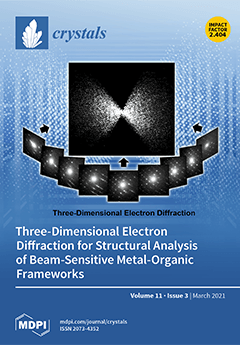To improve the efficacy of existing classes of antibiotics (ciprofloxacin), allow dose reduction, and minimize related toxicity, this study was executed because new target-oriented livestock antimicrobials are greatly needed to battle infections caused by multidrug-resistant (MDR) strains. The present study aims to green synthesize a biocompatible nanohybrid of ciprofloxacin (CIP)-Ag/TiO
2/chitosan (CS). Silver and titanium nanoparticles were green synthesized using
Moringa concanensis leaves extract. The incorporation of silver (Ag) nanoparticles onto the surface of titanium oxide nanoparticles (TiO
2NPs) was done by the wet chemical impregnation method, while the encapsulation of chitosan (CS) around Ag/TiO
2 conjugated with ciprofloxacin (CIP) was done by the ionic gelation method. The synthesized nanohybrid (CIP-Ag/TiO
2/CS) was characterized using standard techniques. The antibacterial potential, killing kinetics, cytotoxicity, drug release profile, and minimum inhibitory concentration (MIC) were determined. Field emission scanning electron microscopy (FESEM) and transmission electron microscopy (TEM) revealed spherical agglomerated nanoparticles (NPs) of Ag/TiO
2 with particle sizes of 47–75 nm, and those of the CIP-Ag/TiO
2/CS nanohybrid were in range of 20–80 nm. X-ray diffractometer (XRD) patterns of the hetero system transmitted diffraction peaks of anatase phase of TiO
2 and centered cubic metallic Ag crystals. Fourier Transform Infrared spectroscopy (FTIR) confirmed the Ti-O-Ag linkage in the nanohybrid. The zeta potential of CIP-Ag/TiO
2/CS nanohybrid was found (67.45 ± 1.8 mV), suggesting stable nanodispersion. The MIC of CIP-Ag/TiO
2/CS was 0.0512 μg/mL, which is much lower than the reference value recorded by the global CLSI system (Clinical Laboratory Standards Institute). The CIP-Ag/TiO
2/CS nanohybrid was found to be effective against mastitis causing MDR
E. coli; killing kinetics showed an excellent reduction of
E. coli cells at 6 h of treatment. Flow cytometry further confirmed antibacterial potential by computing 67.87% late apoptosis feature at 6 h of treatment; antibiotic release kinetic revealed a sustained release of CIP. FESEM and TEM confirmed the structural damages in MDR
E. coli (multidrug-resistant
Escherichia coli). The CIP-Ag/TiO
2/CS nanohybrid was found to be biocompatible, as more than 93.08% of bovine mammary gland epithelial cells remained viable. The results provide the biological backing for the development of nanohybrid antibiotics at a lower MIC value to treat infectious diseases of cattle and improve the efficacy of existing classes of antibiotics by conjugation with nanoparticles.
Full article





